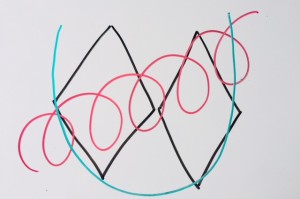It might look a mess but it works, if you let it…
October 19th 2017 was an exciting juncture in Aotearoa’s politics as we awaited the outcome of nearly a month’s deliberations on the form our government would take. The final result of a Labour, NZ First, Green coalition is a combination that has exciting potential.
Some commentators are predicting a government term that will be a mess with the coalition partners being unable to agree on decisions. This blog suggests that the diversity of the three partners provides a valuable opportunity to do politics in a different way. I am heartened by a comment of incoming Prime Minister Jacinda Adern where she says:
“I am not willing to do politics as usual. I do bring a different approach.
I favour being able to collaborate where I can.”
With such a strong intention to collaborate from the leader of our country it is useful that there are plenty of collaborative tools and frameworks that our politicians can call on to guide their actions. I have written before about the many strategies for change and how important it is to focus on thinking differently, working together and behaving differently.
As I was waiting for Winston Peter’s announcement, I found myself doodling the shape of some of the frameworks that I use to support collaborative practice. The resulting picture below (that happens to employ the colours of our new coalition government!) does look like a scribbled mess. Yet to me, this is a more accurate representation of change than the oft-depicted linear process.
Let us briefly look at the frameworks depicted in this scribble:
The black diamonds represent the double diamond model of design thinking[1]. Here you have two phases of divergent to convergent thinking, one to confirm the problem definition and one to create the solution. Using both phases enables possibilities to be explored in creating desirable outcomes for the end user.
The green curve represents the U of the U Lab[2]. This is a framework that focuses on cultivating the interior conditions for creating profound economic and societal change. In other words, changing the world should be connected with changing your self.
The red loops represent the five steps of the Power of Co[3] from collaboration specialists Twyfords. This is a pathway that inspires, supports and reminds collaborators to use rigorous process and appreciative mindsets.
All of these frameworks:
- Value the crucial role that people with lived experience have in understanding the problems and co-creating solutions.
- Emphasise the need to iterate as much as possible making time to do this.
- Encourage going slow to go fast so that problems are commonly understood before solutions can be quickly generated and tested.
Dealing to our societal problems is not linear. It is disordered and requires a combination of rigorous process and appreciative mindsets to be successful. I am hopeful that the new coalition Government will bring such process and mindsets to their first term.
So, bring it on Labour, NZ First and the Greens. Bring your different ways of thinking and doing to the table. Iterate iterate iterate. Keep the core purpose of a better life for Aotearoa’s people and environment as the beaming light while ensuring a strong economy fuels that light. Stand in the mess and make sure kindness, empathy and hope infuse every part of your collaborative practice along the way.
[1] There are many websites on Design, one being www.designcouncil.org.uk
[2] www.presencing.org
[3] www.twyfords.com.au


